The most sustainable hospital in Europe is in the city of Madrid, and it has LEED PLATINUM certification in the Healthcare category, specifically for hospitals.
The Fraternidad Muprespa Habana hospital received the American certification, governed by the US Green Building Council (USGBC). That certification recognizes excellence in design, construction, operation, and maintenance of buildings and facilities from an environmental point of view. LEED (Leadership in Energy and Environmental Design) is considered to be the highest standard in the world for the construction of new buildings.
We must note how difficult it is to obtain HEALTHCARE LEED PLATINUM certification, Because it is an American certification, many of the tests, certificates, and documents requested follow their standards, which makes it harder in Europe to obtain materials that meet the criteria requested and the way they are justified in the eyes of the USGBC.
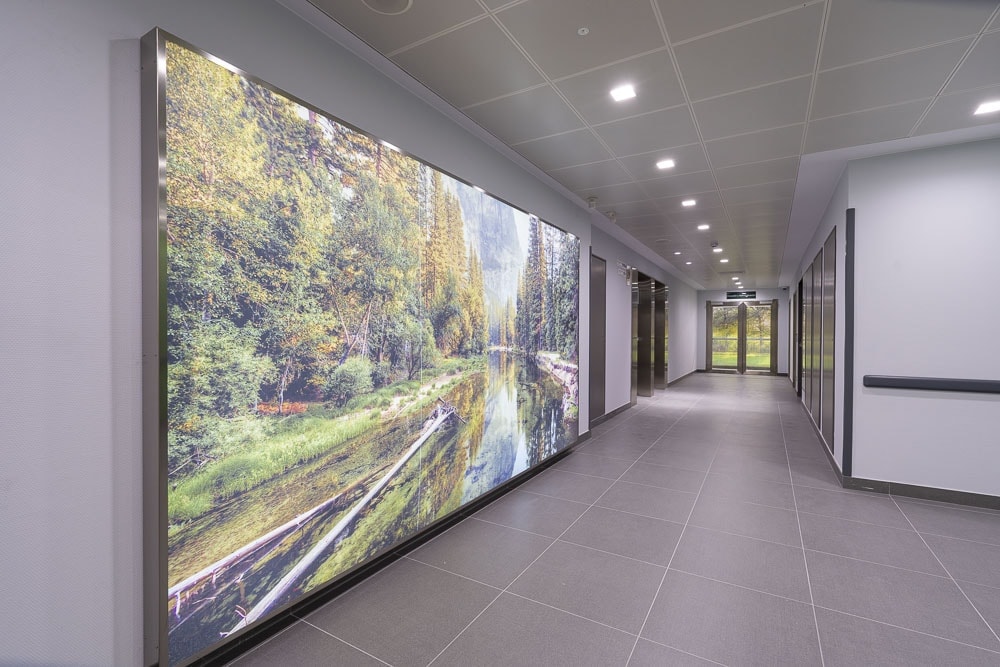
Currently, there are only three hospitals worldwide that have been awarded LEED PLATINUM recognition in the certification system for HEALTHCARE: the Bahçelievler Memorial Hospital in Istanbul; the Dell Children’s Medical Center of Central Texas BT3 in Austin (Texas); and the Proton and Radiation Therapy Center of Chang Gung Memorial Hospital in Taiwan.
A hospital that meets these characteristics doesn’t only focus on optimal efficiency in using resources (energy and water), but also on placing vital importance on the environmental quality and comfort that the building’s occupants will experience.
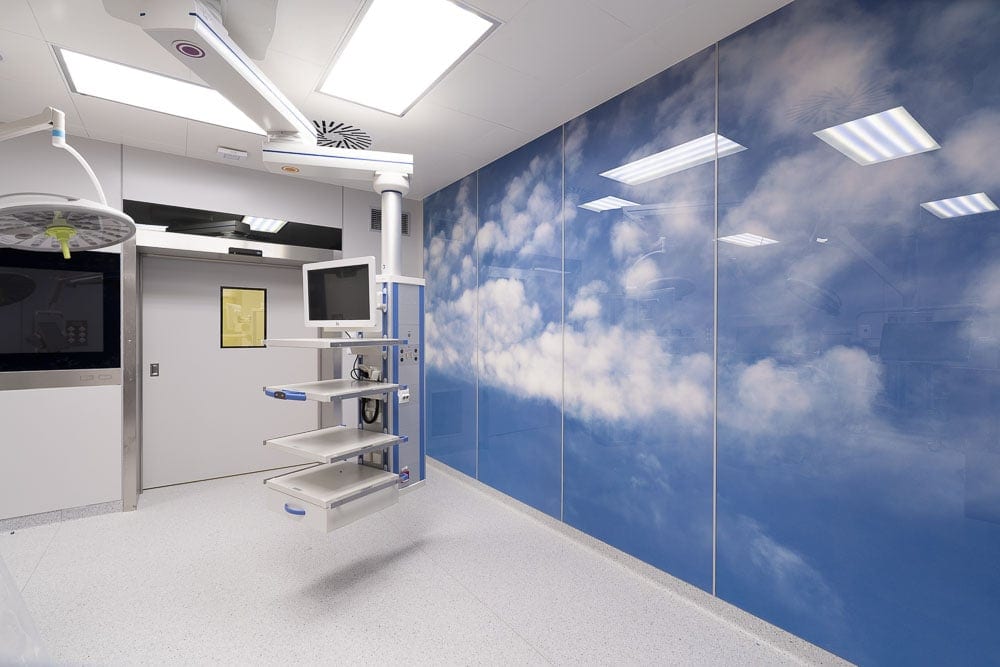
The energy efficiency measures that have been implemented in the building are as follows:
- Installing an optimal amount of thermal insulation in the building’s thermal envelope in order to reduce energy consumption in heating and cooling. The building’s thermal envelope consists of the walls, roofs, and floors that are in contact with non-conditioned areas.
- Installing glazing, optimizing its physical characteristics for thermal transmittance and solar factor depending on orientation, and accounting for the cost of the building’s life cycle.
- Reducing unwanted outside air leaking into the thermal envelope.
- Installing 2 DAIKIN GOLD coolers with an EER of 3.17.
- Installing 3 water heaters with 90% efficiency (PCI).
- Installing heat recovery ventilation systems.
- Incorporating FreeCooling technology.
- Heat recovery for condensation from the HVAC system.
- Installing high-efficiency LED lights.
- Installing monitoring systems for artificial lighting depending on the natural light present (Daylights), as well as how occupied it is (motion sensors), in most areas of the building.
- Installing 600 m² of photovoltaic cells (renewable energy) on the roof, which will produce 137,000 kWh per year, 8% of the center’s annual electricity usage.
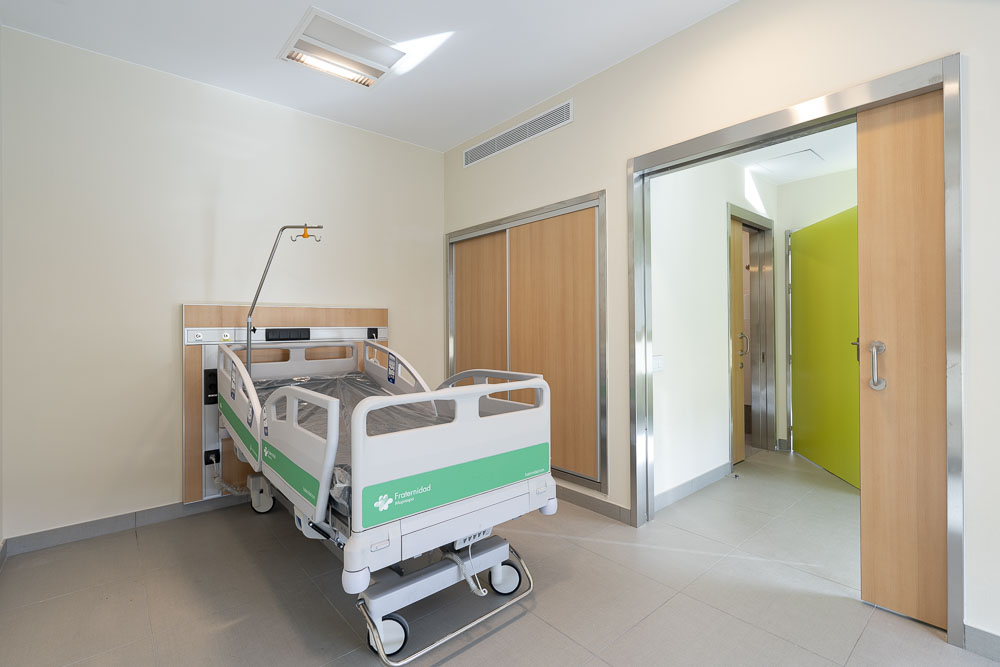
An energy simulation was run with Energy Plus, and the estimated financial savings on energy expenses is 42% for a model building of a similar size. Therefore, the hospital will be able to save:
- 88% on heating in winter
- 32% on interior lighting
- 69% on outdoor lighting
- 52% on natural gas used for domestic hot water
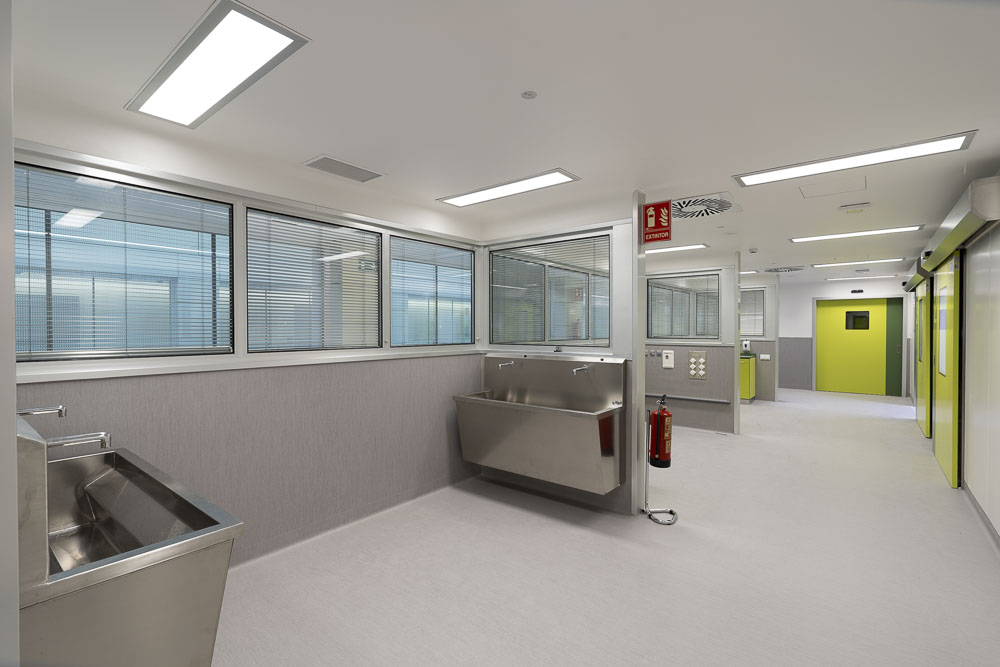
In addition to the building’s energy efficiency, its design and construction have allowed other elements to be optimized, notably saving on water usage with a system for recovering gray water, which is stored, treated, and used in toilets in the circuit of recycled water. The volume of water recovered daily from sinks and showers is about 8,000 liters, and the daily need for recycled water is about 13,800 liters. Reusing 8,000 liters of “new” water creates a yearly savings of almost 3 million liters of water, which accounts for 57% of the need for flushing toilets.
Another very important environmental factor is indoor air quality, which is achieved by using active polarized air filters.
In this section, we must highlight that, of the 6,950m² of flooring in the hospital, 4,500m² are stone floors with a Healthy and Clean (H&CTILES) treatment, 2,000m² are PVC floors with Floor Score certification, and 450m² are polished concrete. They all have low volatile organic compound (VOC) content and reduce the quantity of indoor air pollutants and bad odors that are irritating and/or harmful. In addition, the 4,500m² of stone undergo a photocatalytic Titanium Dioxide treatment, which has biocide properties to eliminate viruses and bacteria, is self-cleaning, and helps eliminate odors.
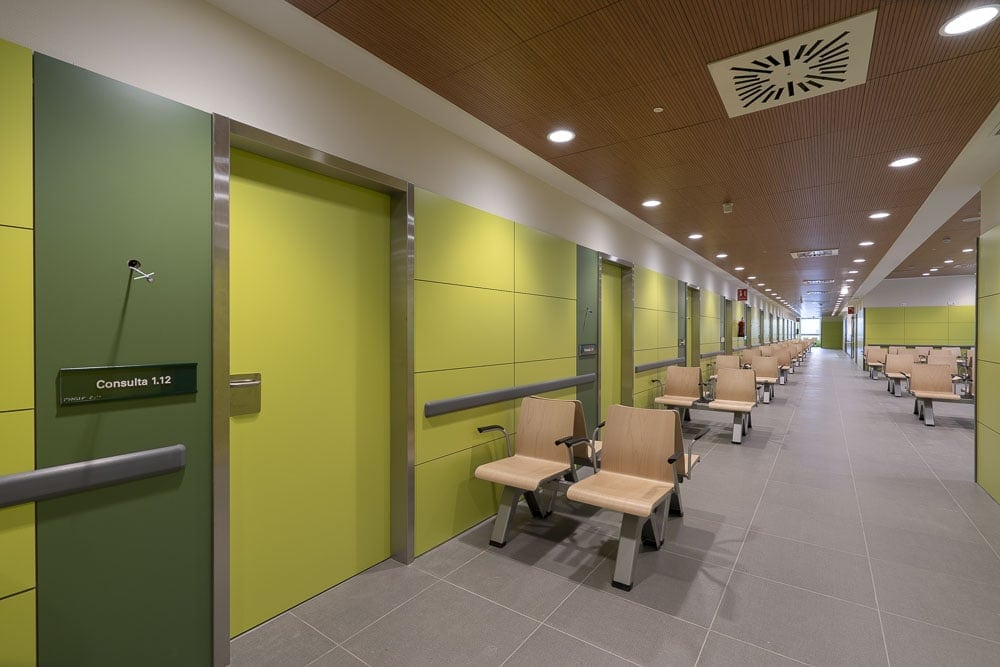
Exposing Titanium Dioxide to ultraviolet radiation produces a photocatalytic reaction that generates active oxygen and decomposes dirt in smaller, less adhesive particles. Thanks to the hydrophilic properties of H&CTILES, water expands over its surface uniformly, thereby increasing drag and eliminating dirt particles.
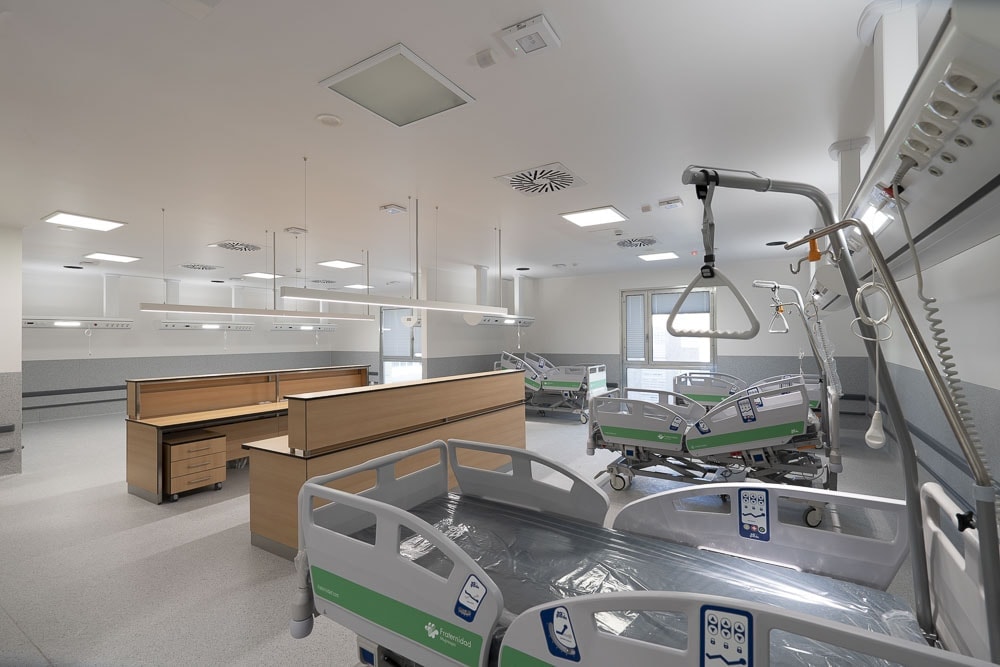
The Fraternidad Muprespa Habana doesn’t only stand out from an environmental point of view. It also stands out from a technological point of view. In this regard, it has a modern surgical unit composed of three “integrated” operating rooms, which allows the patient’s existing information to be consulted in real-time in their Digital Clinical History, as well as connecting with outside the operating room during surgery. The operating rooms have the following features:
- A transfer system for stretchers and surgical tables from the “clean zone” to the operating rooms, in order to guarantee asepsis and the patient’s safety.
- Surgical tables specialized for trauma and orthopedic surgery.
- A digital integration system that allows operating rooms to integrate features like communicating with physicians that are not in the operating room, recording surgical techniques, switching between images from arthroscopic systems and the monitors hanging from surgical arms, streaming the surgery to clinical classrooms, or exporting surgeries to PACS
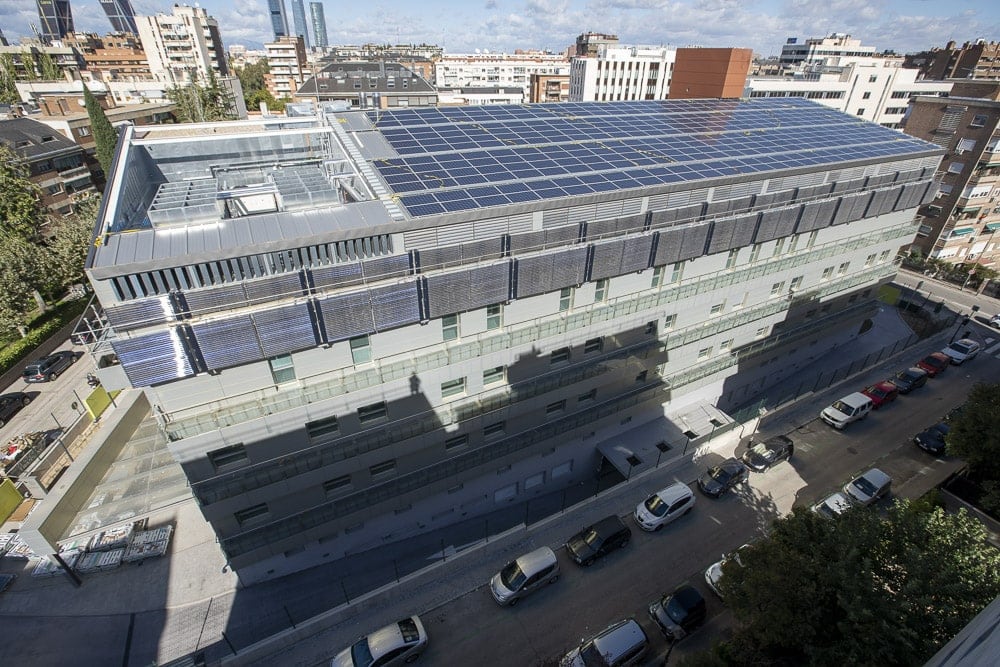
The construction team, led by Juan Luis Junguito, Building Director in Madrid and Castilla-La Mancha, Extremadura, and Data Centers; Belén Marquina Susin, Building I Deputy Director of Management in Madrid, Castilla-La Mancha, and Data Centers; Jose Luis Abad García, Manager, and Jose Manuel Atienza Martín, Head of Construction, was composed of Estefanía Rosillo, Facilities Coordinator; Alberto Hernández Pérez- Solórzano, Quality and Environmental Consultant; Jorge Mora López, Administrative Chief; Daniel Palazón Sánchez, Head of Production; Rodrigo Calderón Berrueta, Facilities Technician; Sandra Ríos Serrano, Head of the Technical Office; Verónica Carmona Moreno, Technical Office Specialist; Carlos Llorente Trapero and Rafael López Rodriguez, Managers; and Cristina Penaus Puga, Prevention Specialist.






